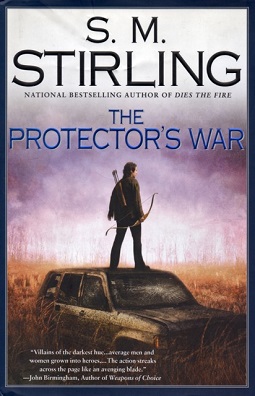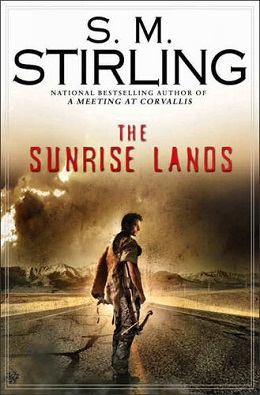Dungeons & Dragons has many influences, including European and American authors. Of the American influences, one genre is sometimes overlooked but just as critical: the Western. [h=3]D&D and the Wild West[/h]One of TSR's earliest founders was co-creator of D&D Gary Gygax's good friend Don Kaye. In addition to helping fund TSR in its early days, Kaye was one of the first players of D&D, even hosting Gygax's sand table in his garage. In the second round of playtesting, Murlynd would debut, a magic-user who was fond of Westerns.
Kaye's fondness for Westerns seeped into D&D itself; Gygax allowed an exception for Murlynd to use his six-shooters in Greyhawk, a world where gunpowder doesn't work. Kaye had plans to create a Wild West RPG, aspirations that were tragically cut short, as retold by Gygax in an interview with Scott Lynch:
Gygax never forgot Kaye's contributions. There's a section in the Advanced Dungeons & Dragons Dungeon Master's Guide that provided conversion rules:
For more parallels, a Hungarian author named Melan provides some much needed perspective:
This may be why recent Star Wars installments feel like RPG sessions, because they're both drawing on Western tropes:
D&D is a mix of many influences, but its tone and style of play -- adventurers on their own making a name for themselves -- seems like it was influenced as much by high fantasy epics as it was by gritty showdowns in the Wild West.
Mike "Talien" Tresca is a freelance game columnist, author, communicator, and a participant in the Amazon Services LLC Associates Program, an affiliate advertising program designed to provide a means for sites to earn advertising fees by advertising and linking to http://amazon.com. You can follow him at Patreon.
Kaye's fondness for Westerns seeped into D&D itself; Gygax allowed an exception for Murlynd to use his six-shooters in Greyhawk, a world where gunpowder doesn't work. Kaye had plans to create a Wild West RPG, aspirations that were tragically cut short, as retold by Gygax in an interview with Scott Lynch:
As D&D was "blowing out the door" at the rate of over 100 a month by summer, Don began to look forward eagerly to doing a Wild West RPG. He planned to draft rules as soon as he could quit his job to work for TSR. We projected that would be possible in about a year or so. Don was very happy. Then, in January of 1975, he had a massive and fatal heart attack. He was only 36 years old when that happened. How ironic, I thought, as I became the first paid employee of the company in June of 1976, Don's birthday month, he being exactly one month older than I. Don was then and still is sorely missed by me. Brian Blume and I went on to create the Boot Hill RPG in Don's memory. He would likely have done it better.
Gygax never forgot Kaye's contributions. There's a section in the Advanced Dungeons & Dragons Dungeon Master's Guide that provided conversion rules:
D&D’s earliest GMs were encouraged to bring guns into their fantasy worlds in the AD&D Dungeon Masters Guide, which included a short section called “Sixguns & Sorcery.” This provided not only rules for converting between AD&D and Boot Hill (TSR’s Wild West roleplaying game, first published in 1975), but it also statted up several different guns. Derringers did 1d4 damage, while other handguns did 1d8 damage. Dynamite did a whopping 4d6 damage—or 6d6 if the DM allowed a saving throw!
[h=3]The Weird West[/h]We know that Gygax was a fan of Westerns, but what's sometimes overlooked is how the themes of the genre carried over into D&D. Blog of Holding points out how Gygax's sources of inspiration had Wild West elements to them: Re-reading Burroughs’ A Princess of Mars recently, I was struck with how explicitly it’s a Western. John Carter fights savages on dead sea bottoms, gropes through caverns looking for treasure, and fights weird monsters. And that’s all before he goes to Mars. The first episode of the novel is a shoot-em-up Arizona adventure which encapsulates all the rest of the book. Mars is Arizona writ large, with bigger and drier deserts, more savage natives, more accurate guns, faster horses, and more faithful dogs. In structure, the book is a lot like the Wizard of Oz movie: a reasonably plausible day, followed by a fantasy dream sequence version of the same events. The second of Gygax’s sources, Howard’s Conan, is similar. Howard was a Texan who wrote Westerns along with his fantasy stories, cowboys-in-the-Middle East stories, and boxing stories. It’s frequently argued that Conan is a Western hero. His martial skills allow him to triumph over the lawless savages and over the decadent “civilized” folk of his wild land. That’s what cowboys do.
For more parallels, a Hungarian author named Melan provides some much needed perspective:
Let us examine the world of the Western. What we see is wilderness. You can find a few settlements (mainly small towns) here and there, but the main stage for the action is the almost entirely uninhabited land. This is a rather important trope, as spotlights one of the main qualities of „adventurers”: the perform their acts not due to the social motivation or compulsion, but because of their own inner conviction. In the West – and in Hyboria or many parts of Greyhawk – the individual is alone. He cannot expect the Law to stand by or against him. The city guard (the sheriffs) are busy with the survival of their own little community and do not represent a serious obstacle for a sufficiently armed and dedicated guy. He has to create justice by himself, and his only reliable tool for that is armed violence.
This may be why recent Star Wars installments feel like RPG sessions, because they're both drawing on Western tropes:
It also follows from this logic that society cannot keep sufficiently high-level adventurers in check. In a world like this, social position is much less important than a strong arm or a sharp blade. This world is completely at oppositon to the High Middle Ages, and is much more similar to the world of tales where the youngest son of the poor farmer can become a king, he just has to defeat the giants first. This doesn’t mean that this sort of fantasy world cannot have oppressed masses, but it’s certain that it won’t be emphatic in the sphere where player characters move. A game can have adventurers be individuals located outside the normal world of bulls and feudal lords, or it can have the idealised American world hide behind the chainmail, the peasantry and the longsword. Here, the individual can pick up a sword or a gun as he wishes, and set off into the big nothing to make his desires come true. And when he retires and buys the inn in Dodge City, nobody will ask him if he got his first five levels from looting tombs and massacring orcs (bandits? indians? peaceful villagers?). What is certain is that whatever he achieved, he achieved it with his own strength.
D&D is a mix of many influences, but its tone and style of play -- adventurers on their own making a name for themselves -- seems like it was influenced as much by high fantasy epics as it was by gritty showdowns in the Wild West.
Mike "Talien" Tresca is a freelance game columnist, author, communicator, and a participant in the Amazon Services LLC Associates Program, an affiliate advertising program designed to provide a means for sites to earn advertising fees by advertising and linking to http://amazon.com. You can follow him at Patreon.










